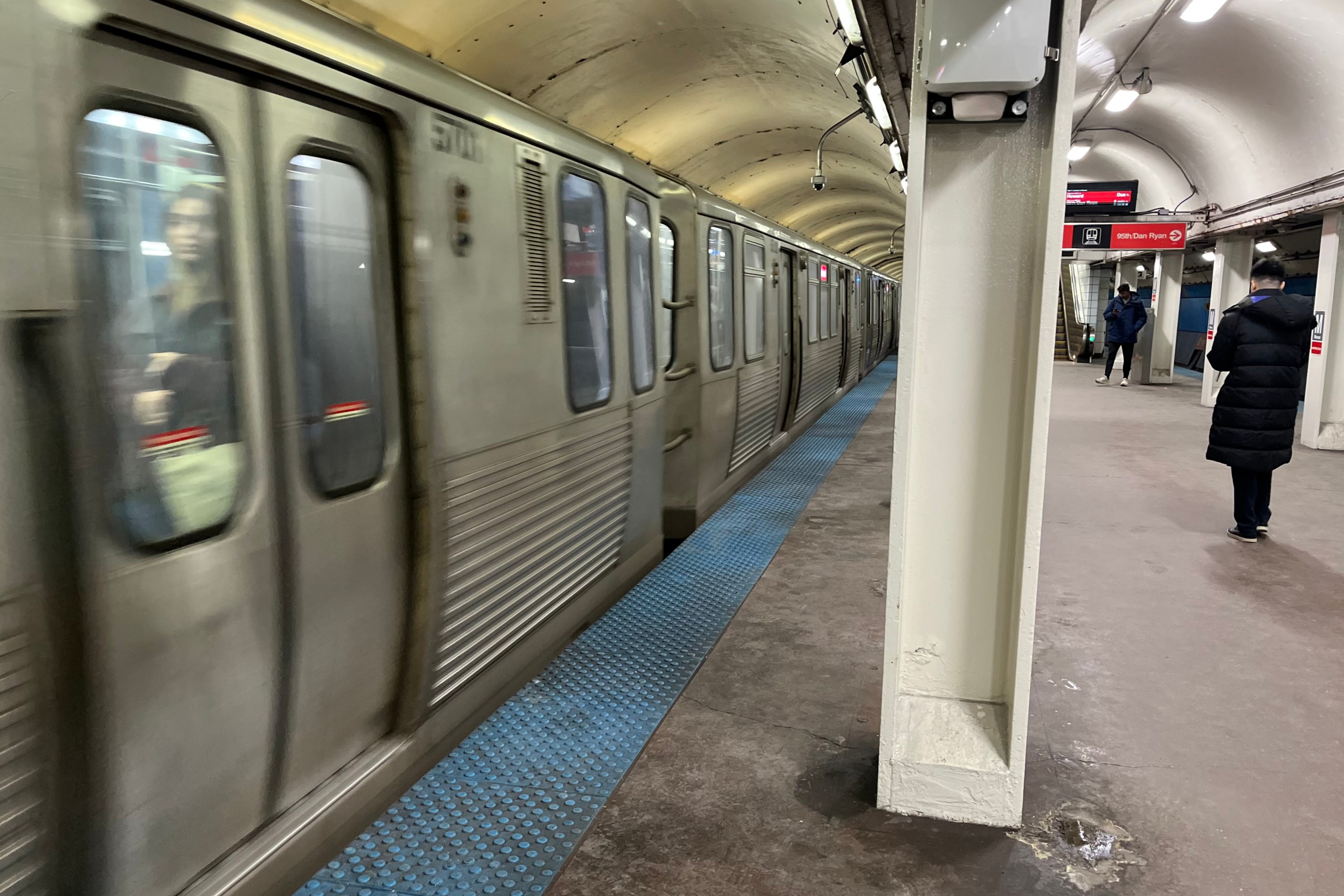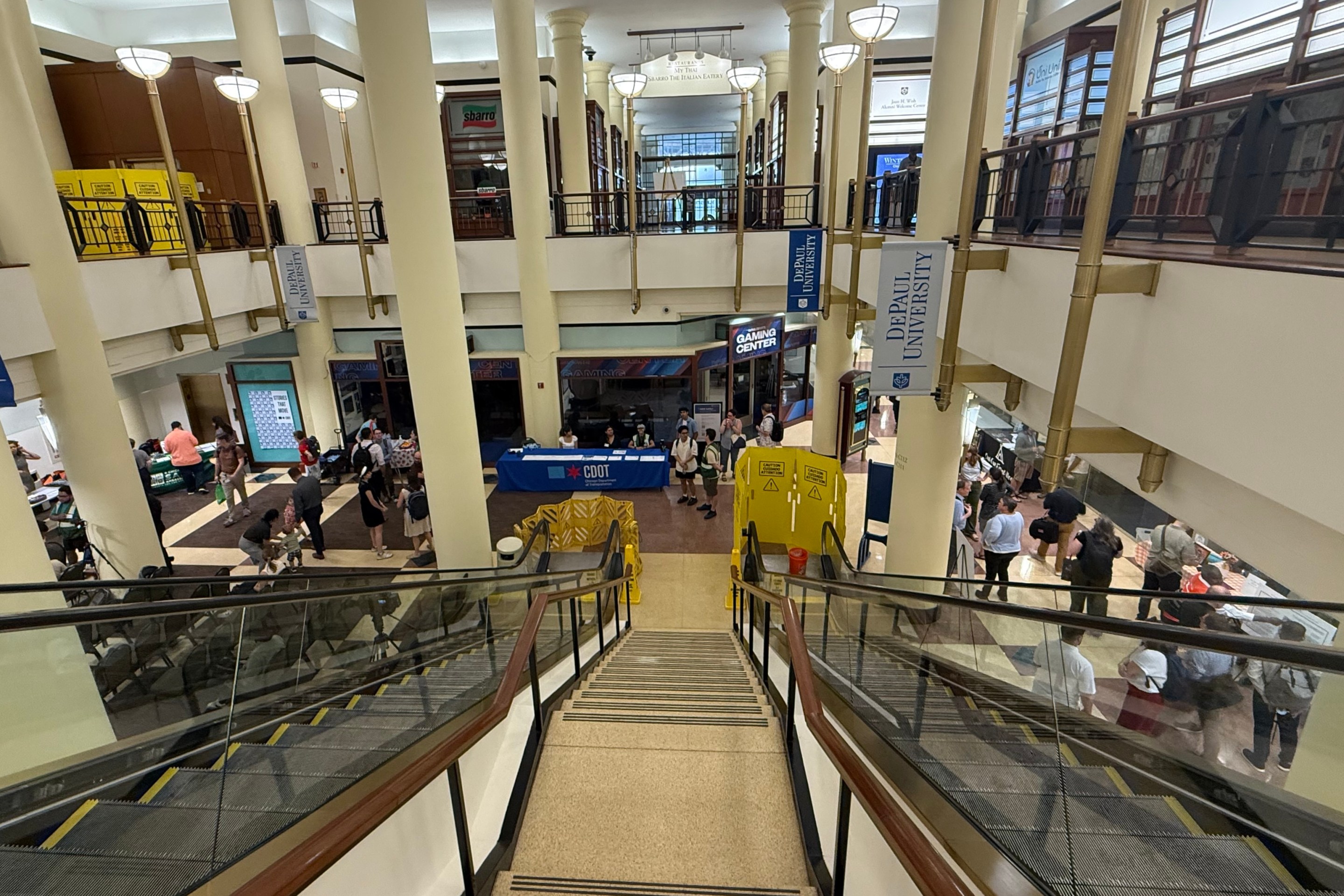Last month we noted that the Illinois Department of Transportation prevented the installation of a protected bike lane planned for Jackson Boulevard, allowing only a buffered bike lane on the segment of the street it controls. Now we know why: IDOT will not allow protected bike lanes to be installed on Chicago streets under its jurisdiction until mid-2014, at the earliest, because the agency wants to see three years of data (presumably crash data) before signing off on this type of street redesign.
Since several Chicago streets are under IDOT jurisdiction, this policy could affect implementation of the Streets for Cycling Plan 2020 and impede the installation of protected bike lanes. Street redesigns that have proven safety benefits may be delayed or downgraded to less effective buffered lanes.
One street that could be affected, for example, is Clybourn Avenue, which is marked as a "crosstown bike route" in the Streets for Cycling Plan 2020. Though the plan doesn't specify which routes should be protected lanes, in a brainstorming session hosted by Active Transportation Alliance in April, 2011, attendees agreed that the entirety of Clybourn Avenue should be one of the city's first protected bike lanes. For most of its length, Clybourn is 52 feet wide, which meets the minimum width standard for protected bike lanes.
However, implementation is scheduled for May 2013 at the latest, which would make an on-time protected lane project incompatible with IDOT's moratorium. (Clybourn Avenue has an additional issue: Much of the street has rush hour parking bans, which would complicate the implementation of any type of bike lane. If CDOT can tackle this conflict, perhaps by eliminating the rush hour parking controls, it would bode well for streets around the city with similar parking regulations, where bike lanes currently can't be added.)
So why is IDOT delaying designs that several American cities have already been implementing for years? The agency says it wants to measure safety impacts based on robust statistical evidence, and that three years provides a representative sample.
The rationale for requiring this information would be reasonable if Chicago was the first city to ever implement protected bike lanes, but it doesn't hold up because the results have been the same wherever protected bike lanes have been installed: The injury rate of all street users is reduced, be they walking, biking, or driving.
IDOT has not clarified whether data from New York City, Washington, and countless cities worldwide was reviewed before deciding to implement the three-year moratorium here.
View IDOT jurisdiction map in a larger screen. Red lines are IDOT streets; blue lines are existing protected bike lanes.
CDOT spokesperson Pete Scale sent the following statement about the agency's arrangement with IDOT regarding protected bike lanes:
IDOT has requested that we monitor and evaluate the safety and operational impacts of innovative bike facilities on City jurisdiction roadways before installing these facilities on State jurisdiction roadways. To that end, we have developed a scope of work for analyzing the safety impacts of protected bike lanes installed to date, and will be initiating this work as "after-installation" crash data becomes available. This evaluation will look at safety impacts for all roadway users.
Additionally, we are monitoring traffic operations on roadways with recently installed protected bike lanes. This includes traffic counts and travel-time studies for both bicyclists and motorists.
As these analyses progress, we will share our findings with IDOT and work together to develop a strategy for the installation of these innovative facilities on State jurisdiction roadways.
Other streets identified in the Streets for Cycling Plan 2020 that are under IDOT's jurisdiction and could be affected by the moratorium include:
- Lincoln Park West from Clark to Fullerton (Neighborhood Bike Route, May 2013-May 2014)
- Diversey Avenue from Logan Boulevard to Damen Avenue (Crosstown Bike Route, May 2014-May 2015). West of here, Diversey suffers from rush hour parking bans.
- Washington Boulevard/Street from Damen Avenue to Michigan Avenue (Crosstown Bike Route, May 2014-May 2015). This street segment was repaved between Ogden Avenue to Canal Street in 2011, and the door zone bike lane remained. Note that the bike lane still ends at Desplaines Street, dumping bicyclists at a hostile transition from a 3 lane speedway to a 4 lane speedway with frequent lane changes.
- Adams Street from Desplaines Street to Michigan Avenue (Crosstown Bike Route, May 2014-May 2015).
- Archer Avenue from Loomis Avenue to State Street (Crosstown Bike Route, May 2014-May 2015). Archer from State to Western Avenue is under IDOT jurisdiction.
- Pershing Avenue from Kedzie Avenue to State Street (Crosstown Bike Route, May 2014-May 2015). Only the segment from Ashland to King is under IDOT jurisdiction.
Additionally, there are many more streets under IDOT jurisdiction that are not identified in the Streets for Cycling Plan 2020 but could benefit from protected bike lanes. For instance, Canal Street between Harrison Street and Cermak Road has two lanes in each direction and is currently used as a speedway between two congested areas: Chinatown and South Loop.
Could Chicago bypass all of these restrictions by taking over the streets from IDOT? There is a precedent downstate: the city of Peoria wanted to put Washington Street on a road diet, converting a travel lane in each direction to parallel parking. "The Illinois Department of Transportation, in their mission to block business development and focus on moving cars using seven lanes in a city of 115,000 people, said no," wrote Robert Guico in the Strong Towns forums. Blocked by IDOT, the Peoria City Council voted to accept jurisdiction of the street last year. IDOT moved its state route through East Peoria; that city's council is now asking for money to widen the road.







